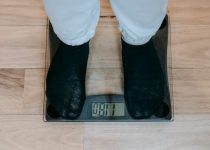How to Create a Balanced Low-Salicylate Diet for Weight Loss
How to Create a Balanced Low-Salicylate Diet for Weight Loss
Embarking on a weight loss journey can be challenging, especially if you are dealing with dietary restrictions like salicylate sensitivity. Salicylates are naturally occurring chemicals found in many fruits, vegetables, and other foods, and they can trigger adverse reactions in sensitive individuals. Fortunately, following a low-salicylate diet doesn’t have to mean compromising on your weight loss goals. In this comprehensive guide, we’ll explore how to create a balanced low-salicylate diet that supports weight loss effectively.
Understanding Salicylate Sensitivity
Before diving into diet planning, it’s crucial to understand what salicylate sensitivity is and how it affects your body. Salicylates are present in a wide range of natural foods, including herbs, spices, and certain fruits and vegetables. For some people, these compounds can lead to symptoms like headaches, skin rashes, and digestive issues.
Statistics on Salicylate Sensitivity
Research suggests that salicylate sensitivity affects approximately 2-5% of the general population. It is more common among individuals with asthma or other allergic conditions, making it imperative for these groups to monitor their dietary intake carefully.
Importance of a Balanced Diet for Weight Loss
While managing salicylate sensitivity, it’s equally important to maintain a balanced diet for successful weight loss. A well-rounded diet ensures you receive the necessary nutrients to support your body’s functions while shedding excess pounds.
Components of a Balanced Diet
A balanced diet typically includes a variety of macronutrients like carbohydrates, proteins, and fats, along with essential vitamins and minerals. For individuals on a low-salicylate diet, it is crucial to identify salicylate-free sources of these nutrients.
Low-Salicylate Foods for Weight Loss
When crafting a low-salicylate diet, focus on foods that are naturally low in salicylates and support weight loss. Here are some options:
Protein Sources
Lean proteins are vital for muscle maintenance and repair. Consider incorporating foods like chicken, turkey, eggs, and legumes. These options are generally low in salicylates and provide the necessary protein for a weight loss diet.
Fruits and Vegetables
While many fruits and vegetables are high in salicylates, there are still plenty of options to include. Bananas, pears, cabbage, and lettuce are excellent choices that are low in salicylates and high in fiber, aiding in digestion and satiety.
Grains and Carbohydrates
Whole grains like rice and oats are low in salicylates and provide complex carbohydrates crucial for energy. These grains can be the foundation of your meals, helping you stay full and energized throughout the day.
Meal Planning Tips for a Low-Salicylate Diet
Planning your meals ahead of time is a powerful strategy for adhering to a low-salicylate diet while aiming for weight loss. Here are some actionable tips:
Create a Weekly Menu
Design a weekly meal plan that incorporates a variety of low-salicylate foods. This not only helps in maintaining a balanced diet but also reduces the temptation to deviate from your plan.
Portion Control
Even when eating low-salicylate foods, portion control is key to weight loss. Be mindful of serving sizes and avoid overeating, focusing on quality over quantity.
Experiment with Recipes
Don’t hesitate to get creative in the kitchen. Experiment with new recipes that combine low-salicylate ingredients. This not only adds variety to your diet but also makes meal times more enjoyable.
Supplements and Nutritional Considerations
While a low-salicylate diet can be nutritionally adequate, there may be instances where supplements are beneficial.
Essential Vitamins and Minerals
Consult with a healthcare provider to determine if you need supplements for specific vitamins and minerals. For example, Vitamin C is often found in high-salicylate fruits, so you might need a supplement to meet your daily requirements.
Tracking Your Progress
Keeping a food diary can help track your salicylate intake and monitor your weight loss progress. This can also be a useful tool when consulting with nutritionists or healthcare providers.
Success Stories and Practical Examples
Real-world examples can be incredibly motivating. Consider the story of Jane, who, after discovering her salicylate sensitivity, successfully lost 20 pounds over six months by following a balanced low-salicylate diet. By focusing on lean proteins, low-salicylate fruits, and whole grains, Jane was able to achieve her weight loss goals while managing her sensitivity.
Statistics Supporting Low-Salicylate Diets
Studies have shown that individuals who adhere to a low-salicylate diet often experience improvements in symptoms along with weight loss. This dual benefit underscores the importance of managing dietary intake for overall health.
Conclusion
Creating a balanced low-salicylate diet for weight loss is entirely achievable with careful planning and a focus on nutrient-rich, low-salicylate foods. By understanding salicylate sensitivity, incorporating a variety of compliant foods, and following practical meal planning tips, you can successfully manage your weight and improve your overall well-being. Remember, every individual’s needs are unique, so it’s important to consult with healthcare professionals to tailor your diet plan to your specific requirements.


